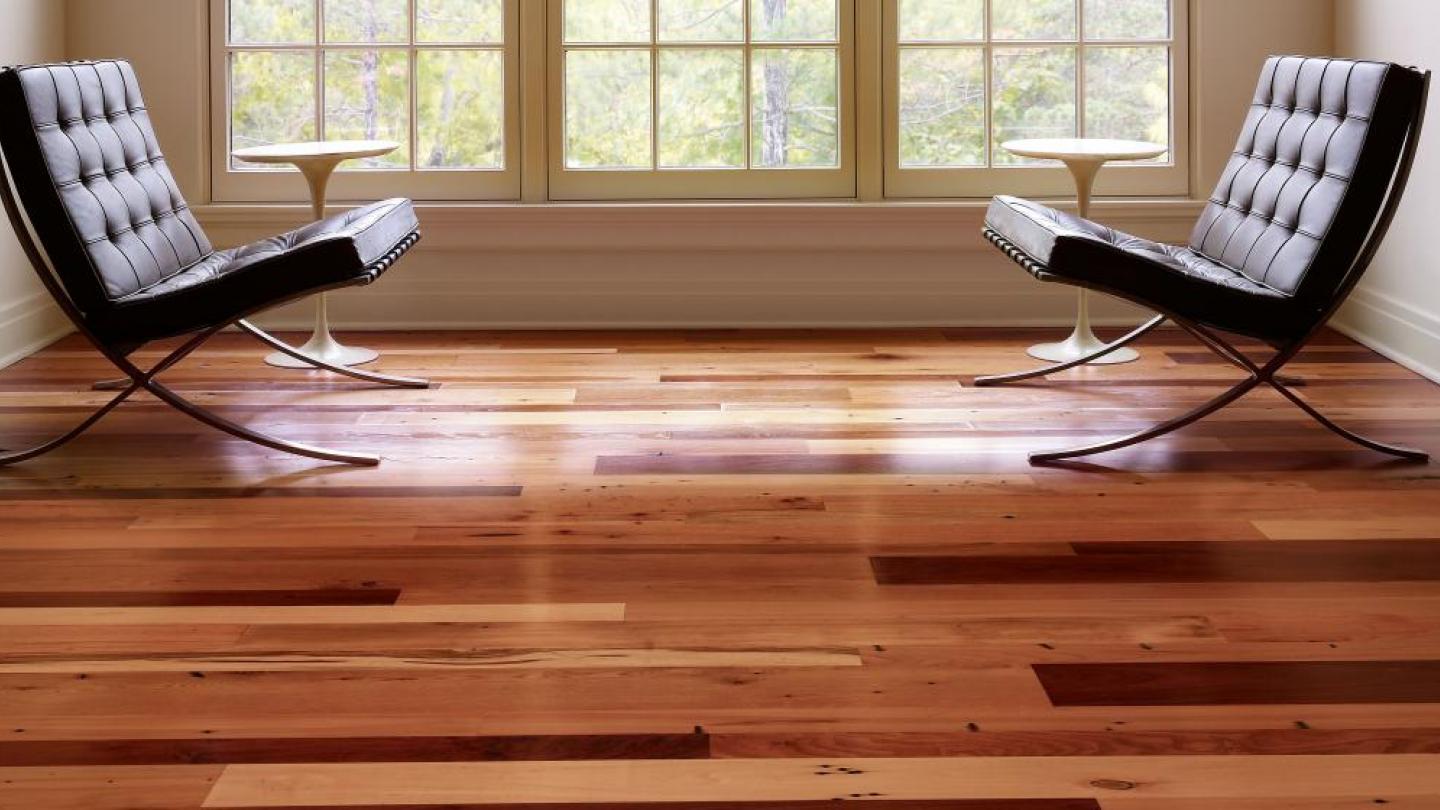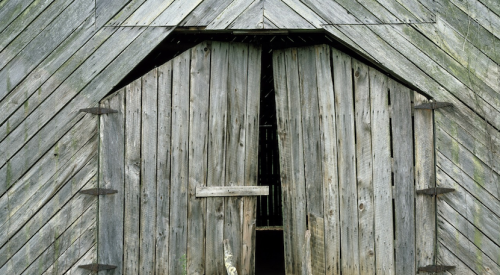To hear architects and builders tell it, reclaimed lumber provides warmth and depth that fresh-cut millwork simply cannot match. But the affordability of such material is still up for debate.
So what exactly is reclaimed or salvage lumber, and what is the appeal? Salvaged lumber is wood that has been saved and repurposed from previous use, which can be old apartment buildings, schools, gyms, barns, pickle vats, or wine barrels.
For some trade professionals, using this material is a sustainability story. Saving old materials and diverting them from landfills preserve trees and helps the environment.
“Reclaimed wood is a great option for anyone who has an interest in conserving natural resources, or preserving history,” says Pete Theodore, marketing manager at Second Chance, a Baltimore-based non-profit organization that deconstructs buildings and homes, salvage usable materials, and make those and other donated items available to the public. “Many of our customers just enjoy the idea of giving new life to old materials.”
[ Read More: 24 SURFACING PRODUCTS THAT WILL STAND OUT IN A CROWD ]
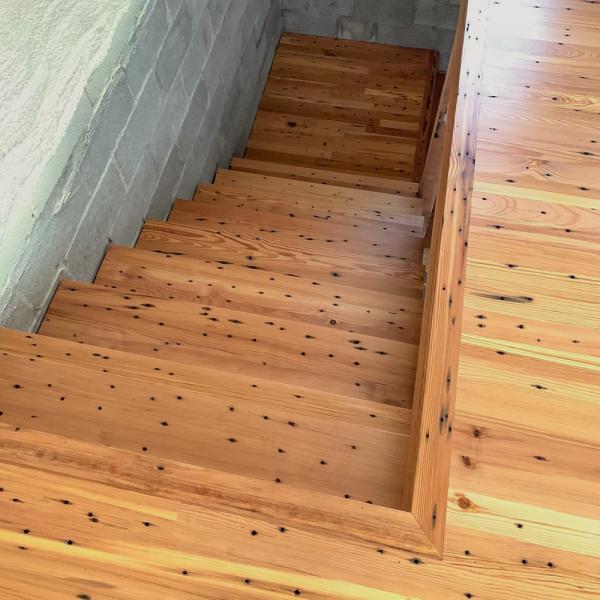
This reclaimed heart pine floor from Longleaf Lumber stills has all the nail marks.
The environmental case for salvage and reclaimed lumber might be a compelling one, but perhaps the most popular reasons for selecting the old product are looks and quality. In many cases, reclaimed lumber come from old structures that may be 100 or 150 years old. Most likely, the wood was harvested from old-growth trees (sometimes 200 or 300 years old) that grew at a slower rate so the stock is exceptionally dense, stable, and good looking.
“Salvaged lumber can also be stronger and more durable to work with than new wood,” Theodore continues. “Its greatest appeal though is that every piece is one of a kind and gives you an opportunity to create a design that is truly unique.”
TerraMai, a 20-year-old reclaimed lumber supplier in White City, Ore., agrees. The company says one of the major reasons why architects are opting for reclaimed wood is durability. “Post-consumer reclaimed wood has often aged significantly, which causes it to be denser and thus stronger than new wood,” the company says. “This is why old-growth wood is in such high demand. While old-growth timber is scarce, reclaimed wood provides an avenue for architects to enjoy the benefits of older wood without the disadvantage of cutting down endangered trees. Many commercial settings require materials that will endure heavy duty use, and reclaimed wood fits the bill perfectly. You might also consider naturally resilient woods such as reclaimed teak and oak for ultimate endurance."
While salvaged lumber most often come old decommissioned structures, some come from logs that have been recovered in rivers in the Midwest and the South. Goodwin Heart Pine in Micanopy, Fla., is a company that specializes in responsibly harvested new wood as well as antique wood that has been reclaimed from old structures. But the company is also known for supplying river-recovered heart cypress and heart pine. As the company explains it, cypress trees commonly lived to be 1,000 to 1,500 years old. Logged 150+ years ago, these original-growth Bald Cypress trees were true giants of the southeastern swamps, towering more 100 feet, the company says.
[ Read More: A NEW RECLAIMED WOOD FLOORING COLLECTION MADE FROM THAI FISHING BOATS ]
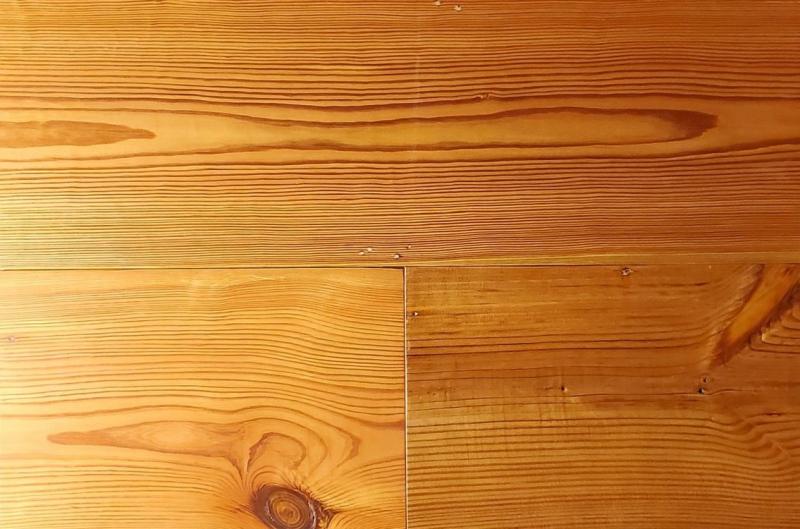
The Hudson Company's Salisbury reclaimed Longleaf Heart Pine.
“Sawyers along the river banks lost these logs back in the 1700s and 1800s,” the company explains. “Preserved by the cool river waters in an oxygen-free sanctuary for centuries, [founer] George Goodwin and his team recover the logs from Florida rivers and turn them into our signature flooring. Highly popular, this is the beautiful, durable wood that built America. Original antique heart pine flooring can be found in historic buildings such as Washington’s Mount Vernon home and Jefferson’s Monticello.”
Goodwin says its heart cypress often has 80 growth rings per inch, and its heart pine is guaranteed to be 200 to 500 years old, making it extremely hard.
“The economical way to transport heart pine and cypress logs was to fashion them into crude rafts and float them to sawmills along southern rivers,” the company says. “Sometimes they extended hundreds of yards long. As luck would have it, these rafts would sometimes break apart. The logs would slip away down to the river bottom where they were perfectly preserved from oxygen and light by the cool water.”
Residential construction pros who are interested in salvaged, reclaimed, and recovered lumber have their pick. Over the years, the number of lumber dealers and suppliers that offer reclaimed wood has only grown. But construction pros need to be aware: cost can be a concern.
[ Read More: THE HUDSON COMPANY, SCHOTTEN AND HANSEN RELEASE NEW FLOOR LINE ]
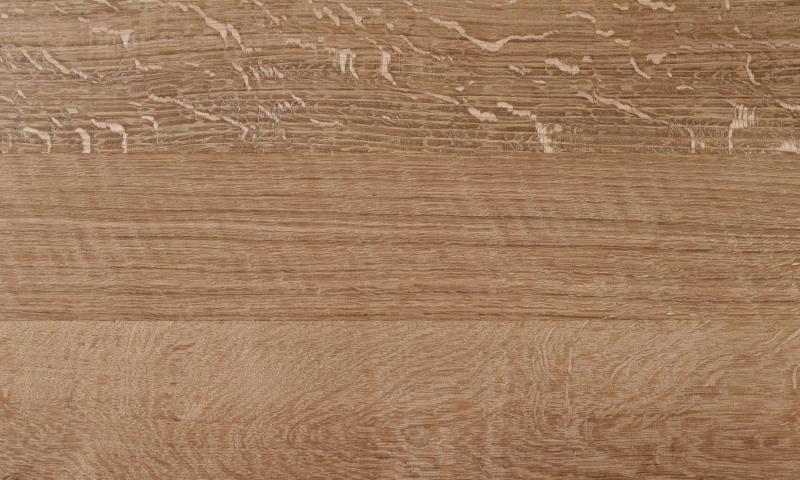
Rift and quartered salvaged white oak flooring from Brick and Board.
“Our reclaimed lumber prices are sometimes even lower than new wood, but the additional labor, overhead and transportation costs expended to salvage the wood and process it (cut, de-nail, etc.) factors into the cost,” Theodore says. “With the current national lumber shortage and attendant price escalation, the stable prices for our reclaimed wood can be especially attractive right now.”
Because of the nature of the product, finding and prepping salvaged lumber is labor intensive. Builders might be able to find free discarded old-growth wood in a construction demolition pile, but the effort to get that material ready for use still requires labor.
When you consider the steps involved bringing salvaged lumber to market, the premium makes sense. The Hudson Company in the New York-Connecticut metro area says the reclamation steps for its products are quite involve. It includes finding the raw materials and transporting to the company’s mill in Pine Plains, N.Y.; using metal detectors to locate old fasteners and then de-nailing; re-sawing the stock; grading the wood; kiln drying boards; re-grading; planing; molding; and defecting.
[ Read More: PICTURE PERFECT: A SLATTED WOOD WALL CREATES A SPACE FOR ART ]
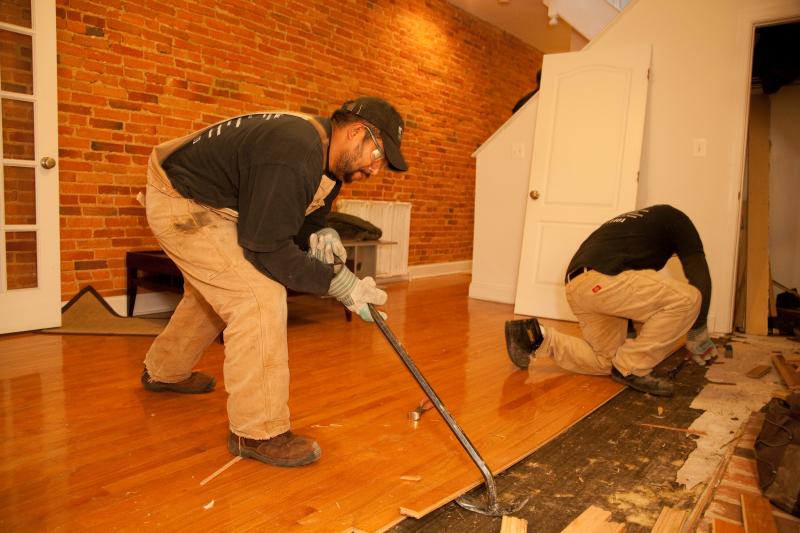
Second Chance workers harvesting floor boards for its yard.
But there are ways to find affordable stock for your projects.
- First, construction pros can find a number of lumberyards and reuse organizations that sell salvaged stock at relative affordable prices. Often, this material will require some work.
- Builders and architects also can form relationships with demolition crews who can provide advanced notice of upcoming demo projects. This material might even be free.
- Remodeling and adaptive reuse projects also are ideal opportunities for trade pros to find high-quality wood studs, joists, rafters, beams, and even exterior sheathing that can be cleaned up and reused in the new builder. Improvisation is key in such situations. You never know what material you will find.
- Finally, some salvage lumber come dressed (surfaced, planed, milled), but some are sold in their rough state. Builders can save money by buying stock and doing all the prep work in house. This is also a good idea because builders control how much old material to remove, fine tuning the exact look they are trying to achieve.
Where Can You Get Salvaged Wood?
Reclaimed Lumber Suppliers and Resources
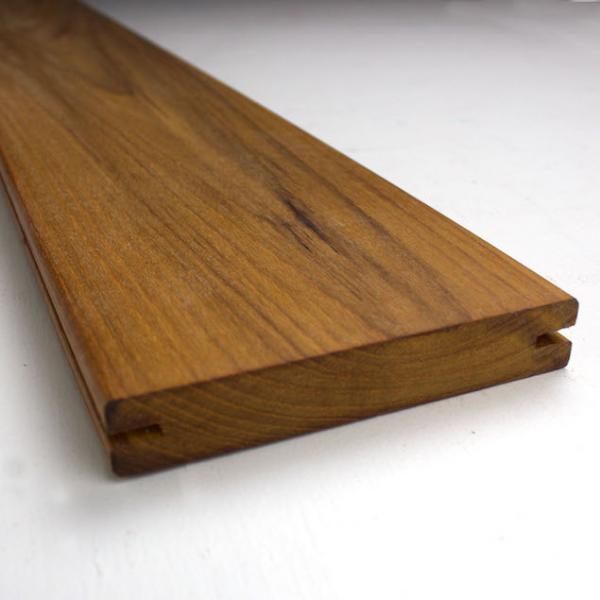
Terramai salvaged teak decking
Appalachian Woods, flooring and millwork, appalachianwoods.com
Armster Reclaimed Wood, Springfield, Mass., armsterreclaimedwood.com
Atlantic Reclaimed Lumber, Elizabethton, Tenn.
Brick and Board, Baltimore, brickandboard.com
Carlisle Wide Plank Floors, flooring, wideplankflooring.com
Dakota Timber Co., Fargo, N.D. dakotatimberco.com
Duluth Timber Co., flooring and millwork, duluthtimber.com
Elmwood Reclaimed Timber, Peculiar, Mo., elmwoodreclaimedtimber.com
Goodwin Company, flooring and millwork, heartpine.com
Jarmak Reclaimed Wood, Oxford, Mass., jarmakwood.com
Longleaf Lumber, flooring, longleaflumber.com
M Fine Lumber, Brooklyn, N.Y.
NYCitySlab, Yonkers, N.Y., nycityslab.com
Northeast Reclaimed Lumber, Ephrata, Pa.
Philadelphia Salvage, Philadelphia, philadelphiasalvage.com
Reclaimed Lumber & Beams, Lenoir, N.C., reclaimedlumberandbeams.com
Reclaimed Lumber Products, Emmett, Idaho, reclaimedlumberproducts.com
Real Antique Wood, Irvington, N.J., realantiquewood.com
Rochester Salvage & Supply, Rochester, Mich., rochestersalvage.com
The Sacred Crafts, Carlsbad, Calif., thesacredcrafts.com
Salvaged Lumber Co., Knoxville, Tenn.
Second Chance, Baltimore, secondchanceinc.org
Steno's Reclaimed, Mt. Airy, Md.
Terramai, White City, Ore., terramai.com
The Hudson Co., New York, thehudsonco.com
Vintage Lumber, Woodsboro, Md., vintagelumber.com
Viridian Wood Products, flooring and millwork, viridianwood.com
Wellborn + Wright, reclaimed flooring, wellbornwright.com
